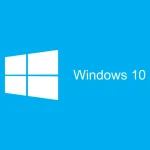A bare-metal server is also known as a single-tenant physical server, and it has several use cases. Since these types of servers are not shared across multiple users, it doesn’t have the same deficiencies as virtualized platforms.
Bare-metal servers also provide unparalleled performance. Resources can be allotted as per the tenant’s preferences, and the tenant gets root access to the system. Bare-metal servers are generally quite customizable as well, and they can be configured to handle one or multiple workloads.
If you are planning to deploy a bare metal server, make sure to check this guide out for a primary introduction to the bare-metal environment.
What exactly is a bare-metal server?
A bare-metal server is a specialized computer server that’s only allocated to a single tenant, meaning that the hardware resource pool is not shared across multiple tenants. Bare-metal servers are also designed to run all the time. It offers the reliability and stability that’s needed for important work.
Due to the absence of multiple virtual environments on a bare-metal server, tenants get the best of their leased hardware and process large amounts of data with ease.
A core benefit of using bare-metal servers include root access to the server, meaning that the tenant can take advantage of the full hardware. Usually, when you are in a virtual machine over a hypervisor, you can access and configure only the guest operating system via the VM management interface.
That isn’t an issue with bare-metal servers. You get not only deep access to the hardware architecture but also additional tweakable settings that may improve your application.
Unlike a virtual environment, bare-metal servers don’t need to use multiple VM layers or hypervisors. It results in overall better performance, as you are not limiting the resource pool anymore. However, it’s still possible for a tenant to virtualize several environments in a bare-metal server and create a hybrid setup. Administrators can individually manage virtualized sectors from a web portal anytime.
Leasing a bare-metal server is like renting a house or apartment. You can customize it as per your liking, and you have complete access to all the rooms.
What is a bare-metal environment?
We use the term ‘bare-metal’ to distinguish it from modern forms of cloud hosting and virtualization. In a data center of multiple types of servers, bare-metal servers are the only ones that are not shared between multiple tenants.
In any case, a virtualized environment does have its physical hardware, but the end-user has to work with only limited virtual resources. It doesn’t offer the same level of access as a bare-metal environment.
Since only a single client is given access to a bare-metal server, root-access is offered freely. You can make advanced software-level adjustments, which isn’t possible with a bare-metal hypervisor.
Why should you go for a bare-metal server?
Bare-metal servers are excellent for both small and large businesses, as they are a cost-effective solution and highly scalable compared to traditional hosting services. While many analysts say that bare-metal servers don’t have as much demand as other options, it still is immensely used in corporate industries because of its customizability factors.
Bare-metal servers are also perfect for sensitive workloads, such as database and media encoding applications. Render farms in the film industry also use dedicated bare-metal servers instead of virtualized ones to get the best performance possible. Even for smaller startups, bare-metal servers offer an affordable platform.
As we previously mentioned, there are several advantages of going to a bare-metal environment, such as the user’s complete access to the hardware resource pool.
Since bare-metal servers don’t have multiple clients to work with, it can offer significantly better performance in high-intensity workloads. It’s also far easier to manage, as you are offered several setup options you can tweak to match your preferences.
Bare-metal servers are more cost-effective than on-site servers since the client doesn’t have to spend extra for maintenance. Also, downtimes are extremely rare in a data center, as they always have backups ready to go. Furthermore, you get to take advantage of higher network bandwidth.
Services like Heficed offer bare-metal servers with 24/7 professional support, guaranteed uptimes, fast provisioning, and network traffic management tools. It eliminates the need for on-site server deployments, meaning that you won’t have to hire additional staff to perform maintenance checks.
Configuring a leased bare-metal server is fairly easy and less time consuming, as hosting services offer pre-configured servers for specialized workloads. Almost every bare-metal servers are powered by either Intel Xeon or AMD Epyc, which are enterprise-grade, highly scalable lineups of processors. You can throw pretty much any workload at them.
Is a bare-metal server suitable for your work?
Bare-metal servers are the hearts of thousands of essential IT infrastructures, as there are so many benefits of having a bare-metal environment to work with.
You can expect to get the best out of bare-metal server hardware, especially now that a user can deploy additional ones later down the road to expand their businesses on a global scale. It also cuts down a considerable amount of maintenance costs, as it’s all on the server provider. Since vare-metal servers are also highly customizable, you can possibly set up a hybrid virtual environment to allocate the hardware pool in several fields.
If you can consider using bare-metal servers as a long-term solution, it’s needless to say that they are the best ‘cost-effective’ option for your business, given how much flexibility bare-metal environments offer in terms of customization and performance.







